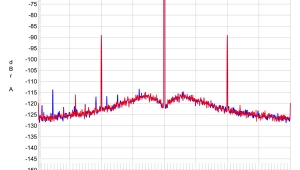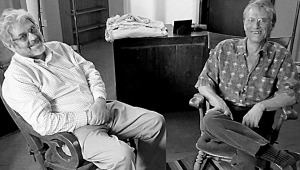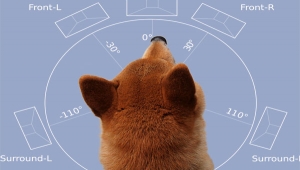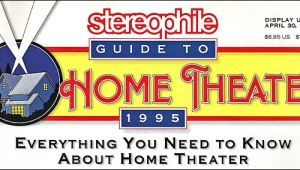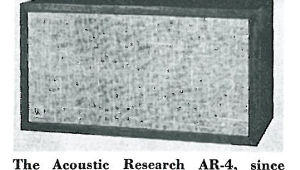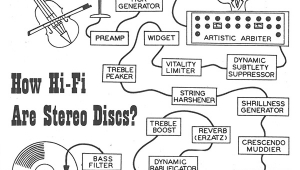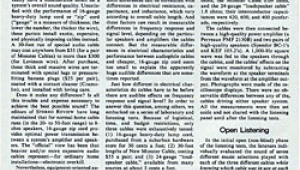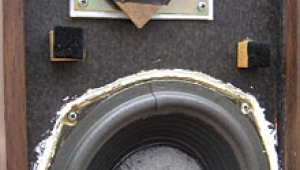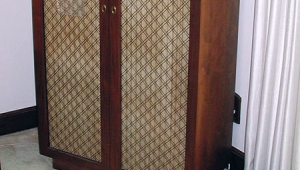| Columns Retired Columns & Blogs |
Bozak Concert Grand B-410 loudspeaker Letters
We received the following letters in response to the Bozak review:
Editor: I thoroughly enjoyed reading Peter Breuninger's review of the Bozak Concert Grand speakers. The review reminded me of the time when I met Mr. Bozak while working as an audio salesperson in Connecticut back in the 1970s. Mr. Bozak showed up at our store one day with an order I had placed with his company for drivers and crossovers I needed to complete a kit version of the B-4000. (He said that it was on his way home.) Not only did he personally deliver the components to me, he even got down on the floor of the store to show me how to wire the speakers and crossovers in the correct manner! (Reverse polarity for the midrange.) While I no longer have the speakers, I will always treasure the experience of meeting a true Audio genius and more importantly a great gentleman. Thank you.—Ira Cohen, Middletown, CT
Editor: Thanks for one of the most fascinating features ever in Stereophile's pages, on the classic Bozak Concert Grand.
Being a speaker "fan"/"tinkerer" myself, I couldn't help but marvel at the construction details of the Grand. I stumbled onto the idea myself, as Mr. Bozak had, that all speaker cone materials have a "sound" to them, although I think that there is as much to the profile and geometry. If you take all of the construction details into account—I think that that outweighs the material itself—but I still think that the material is on the right track.
Ruby Bozak's use of latex to coat aluminum cones and to change the thickness of the material with the radius of the cone, are certainly very modern-sounding concepts. In fact, it seems to me that laminations of some type are becoming the dominant way of making diaphrams.
In many ways, this all shows how little speakers have improved in 50 or so years. We still rely on human invention, and tweaking by ear and guess work- and speakers are still the "weak audio link."
If there is a real weakness to the old Bozak product, it's that at the time manufacturers were expected to make cabinets in a certain style, with heavy grilles with protruding frames, and that back then stereo image was poorly understood (or used), and that speakers were "supposed" to be boxes.
Still, the product stayed on the the market until the 1970s, and withstood some huge changes in audio. At least outside, a '70s speaker (if it were serious) was much different.
If Bozak were around today, I'm sure that they would be putting out an exciting, ground breaking product.
And thanks for the frequency-response graph. A good warning for anyone wishing to use the Radio Shack supertweeter.—Nathan Shinder, Levittown, NY, AlphaNathan@netzero.net
Editor: I thoroughly enjoyed your review of the Concert Grands in your latest issue. If I might, I'd like to add a couple of caveats for people looking to buy Bozaks.
Rudy Bozak periodically improved his tweeters, going from a 200 to a 200X to a 200Y to a 200Z. Each change resulted in a flatter and more extended frequency response, with the "Z" supposedly getting out close to 20kHz.
Early Bozaks (we're talking the Eisenhower administration here) had midrange drivers with paper cones instead of aluminum. As I recall, they're not as good as the later efforts. More fragile too.
Early Bozaks also had pretty limited power handling - 25W or so per woofer. This wasn't a problem when a 40W Marantz 2 was considered "super" power, but it might be now.
If you're buying an old Bozak—I guess by this point there aren't any other kind—make sure the woofers haven't been reconed. Originals have a very distinct look, feel and even smell—it's that wool pulp. A lot of times a woofer would get blown and the cone would be replaced by whatever fit. It might be very nice, but it's not really a Bozak any more.
Mr. Bozak also liked the "building block" approach. You could buy a couple of big cabinets—say, Concert Grands—and put one woofer and a pair of tweeters in it. Then, when circumstances permitted (and the significant other had cooled down a bit) you could add the midranges and crossovers, and then another pair of tweeters, then a second woofer on each side, then two more tweeters and so on until, after several years, you had the complete system. Very ingenious and quite in keeping with the 1950s image of hi-fi as a hobby for tinkerers. The problem is, not everybody made it to the final stage, and so people nowadays are selling cabinets as, say Symphonies, when in fact there are only half (or less) the number of speakers in them you'd expect. You need to check.
Finally, I haven't seen any Concert Grands selling for much more than $1200–$1500 a pair—except for a set on eBay in custom-built, art deco, mahogany cabinets, but that was a special case. They don't seem to have the market appeal of their giant contemporaries like the Paragon, Hartsfield, and Patrician.
Thanks again for the reviews of equipment of long ago. I hope you can keep them coming - and might I suggest a Hadley 601 for your next project?—Bob Armbruster, barm@classic99.com
Editor: Readers might be interested to learn that it was possible to assemble the Bozak B-410 Concert Grand speakers as I did many years ago.
I first bought the B-199 woofers with two B-200 tweeters mounted coaxially in an infinite baffle. Great sound but I had my eye on bigger things! Next I upgraded to the B-4000s and mounted them in a wall. Finally I purchased the B-410 cabinets, the rest of the speakers and the crossovers, mounted everything, sealed around the tweeters and placed the cotton batting as per Rudy Bozak's instructions.
I have forgotten what the final cost was—probably more that the assembled units—but it was spread out over many months and I had the pleasure "knowing what was inside". Space limitations and WAF demanded that I part with the 410s. I donated them to a music school where, as far as I know, they are still in use.
Wish I still had them.—Paul Grammer, Ewing, NJ, pogapp@aol.com
Editor: The review of the Bozak Concert Grand was a lot of fun! But these speakers are far and few in-between. However, there is a plentiful supply (on eBay) of the old Altec A-7s in various incarnations, as well as the components. Why not try a pair? (The crossover caps may need to be replaced.) Also, there is a good supply of Tannoy, Altec, University, ElectroVoice, Jensen, and other similar coaxial-type speakers with horn mid/tweeters. I suggest you listen to a piano on a Tannoy GRF and let me know if there is any megabuck speaker that comes close.—Vincent Mogavero, VMogavero@aol.com
Editor: I thoroughly enjoyed the review of the Bozak Concert Grand in the October 2005 issue, and love the entire vintage review concept; keep up the good work. I'd like a bit more information from Mr. Breuninger, though, regarding the miswired midrange situation. Can he share with us the details of the correct configuration?
My friend Phil owns a pair of CGs in a mostly vintage system. When I heard his system, it consisted of solid-state McIntosh pre-and power amps—C22 and MC2105, I believe—an old Thorens 'table with Shure V-15 cartridge, and a Kyocera CD player, all hooked together with crappy cabling—a typical 1960 state-of-the-art stereo (except the CD player)! He'd certainly be interested in checking the wiring on his speakers!
When I heard it, I was surprised how good his system sounded. It sounded much better and more modern (in the good sense) when I hooked up some more modern gear (Bear Labs interconnects and a Virtual Image tube amp I'd brought along for the occasion). The midrange is, as Mr. Breuninger seemed to indicate, the strong suit of the Concert Grand, particularly on male vocals (an area I find lacking in many speakers). It's no coincidence that Phil owns these speakers and is a big fan of male vocals, especially baritones like Jim Reeves.
While I wouldn't trade my Audiostatics for the Concert Grands, I can certainly understand why Phil resisted upgrading his speakers. Now how about finding some functioning Servo-Statik Is or IAs or original Rectilinear IIIs to review (don't bother with the lowboys or later production IIIs)?—Alan Rauchwerger, Virtual Image, Inc., Rochelle Park NJ. virtualimage@juno.com
- Log in or register to post comments

